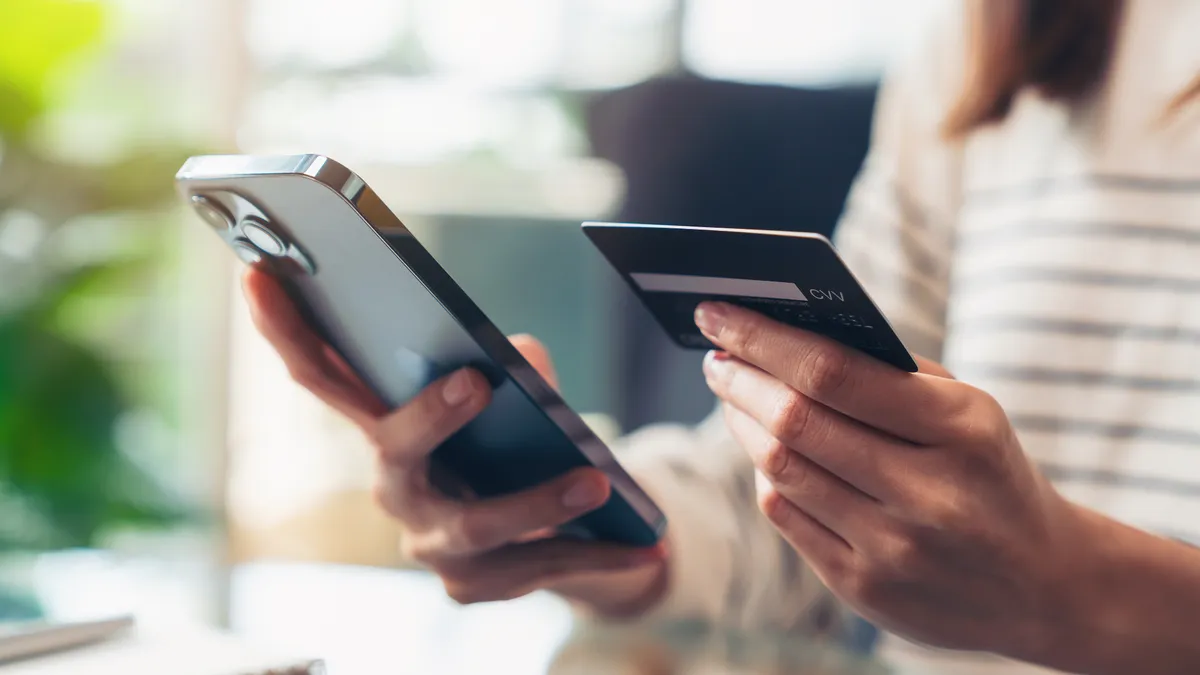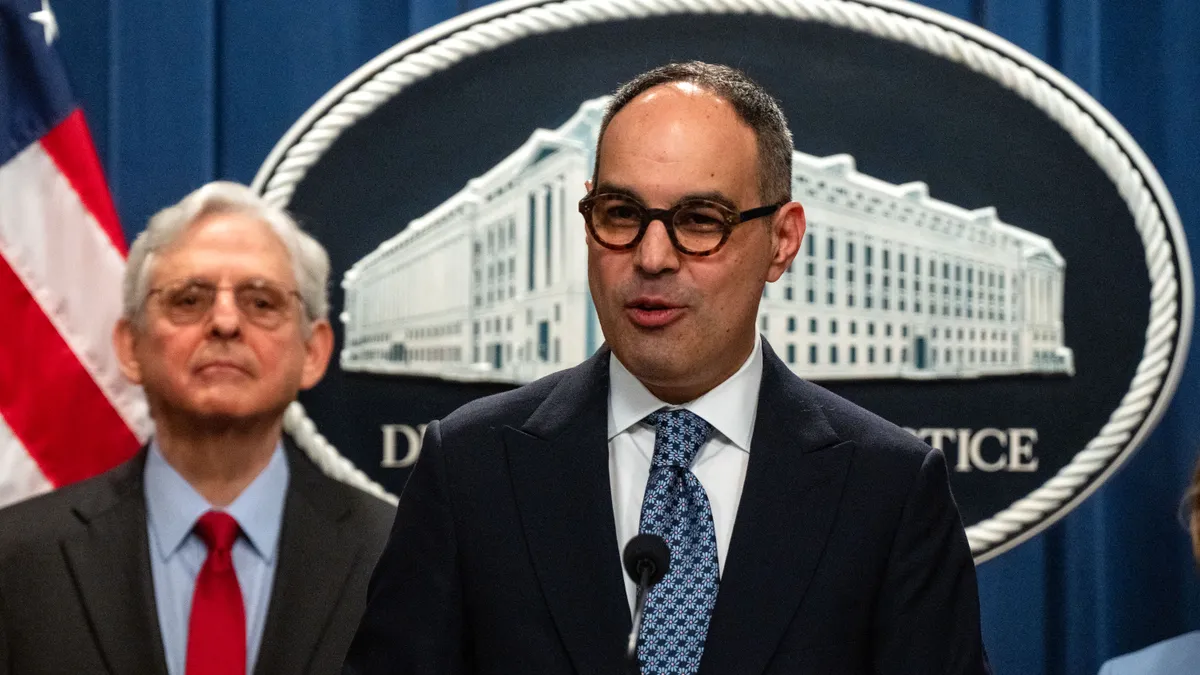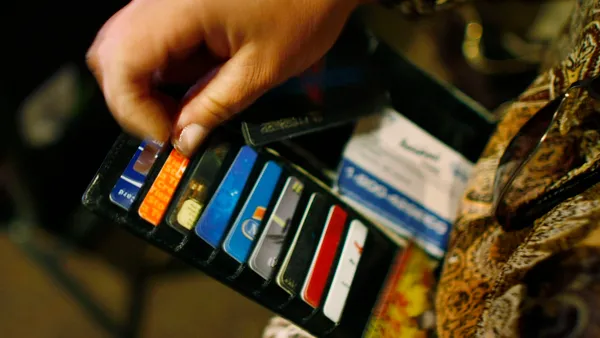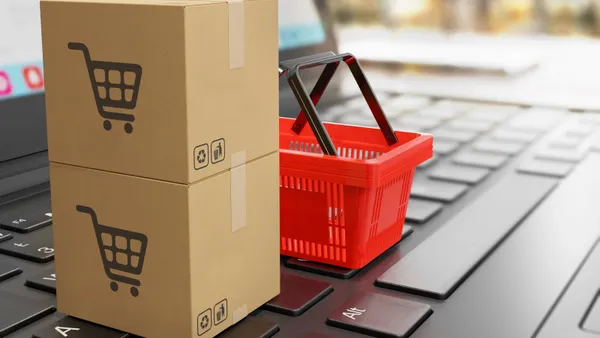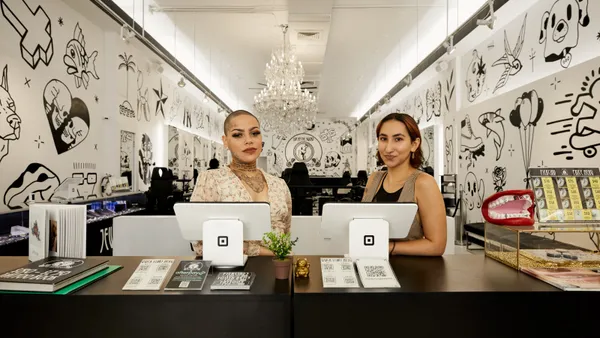Dive Brief:
- Global spending on credit cards last year rose to more than $13 trillion across in-store and online checkout, according to an annual report from Fidelity National Information Services, also known as FIS. The March 23 report didn’t provide a more exact figure or spell out exactly how much it increased.
- The payment processing and bank technology company attributed the rise to more sources of credit, including digital wallets loaded with credit cards, buy now, pay later options and point-of-sale financing offered by fintechs, banks and merchants.
- Facilitated by real-time payment rails, account-to-account payments are becoming a more popular payment method globally, FIS said in the 182-page report produced by its Worldpay unit. Global account-to-account transaction value was about $525 billion last year, according to the report.
Dive Insight:
The FIS report noted the increase in global credit card spending last year contradicted FIS’s earlier projection of a decline in such spending. An FIS spokesperson wasn’t immediately able to provide comment on a more precise figure for that global amount.
With consumers’ use of credit rising, it’s not surprising in some ways that it has also resulted in record levels of credit card debt. A report from the Federal Reserve Bank of New York's Center for Microeconomic Data found that consumers’ credit card balances reached $986 billion in the fourth quarter of 2022, up from $927 billion before the COVID-19 pandemic.
Digital wallets accounted for approximately $18 trillion in consumer spending last year and continued to be one of the fastest growing payment methods, according to the FIS report. Digital wallets, such as the wallets from PayPal, Apple Pay and Alipay, comprise 49% of the international e-commerce market share and 32% at the point-of-sale. Such wallets often incorporate a credit card or debit card.
The FIS report pointed to PayPal as the “leading” digital wallet in much of Europe, including Germany, France, the United Kingdom and Italy, based on a survey by FIS of digital wallet users.
PayPal has taken steps to improve its digital presence and its international payments functionality. During a bank conference last November, PayPal Senior Vice President Doug Bland said that the company is piloting a teen account for users of its Venmo peer-to-peer payment app. Earlier this year, the payments company also collaborated with Visa to enable real-time cross-border and debit deposit services.
The report said that buy now, pay later transactions made up 5% of the global e-commerce spending last year, and FIS said that share is expected to climb to 6% by 2026. Nonetheless, the report didn’t specify what dollar value was attributed to that payment method and a spokesperson didn’t immediately respond to a request for the figure.
In its report last year, FIS said BNPL accounted for $157 billion of global e-commerce in 2021, or 2.9%, fueled by strong demand in key markets such as North America and Europe.
The BNPL payment option has attracted the attention of grocery shoppers. In the first two months of this year, the share of online BNPL transactions that included groceries rose 40%, according to an Adobe Analytics report earlier this month. The home furnishings sector’s share of transactions tapping BNPL also grew 38% during the same period, that report said.
Meanwhile, cryptocurrency transactions comprised $11 billion in global 2022 transaction value, according to the FIS report, but it noted that the payment method remains a fringe option.
While crypto is a rarely used payment tool, that hasn't stopped regulators from scrutinizing the industry. In January, the Federal Reserve, the Federal Deposit Insurance Corporation and the Office of the Comptroller of the Currency issued a joint statement warning to banks about the risks associated with the cryptocurrency industry.


